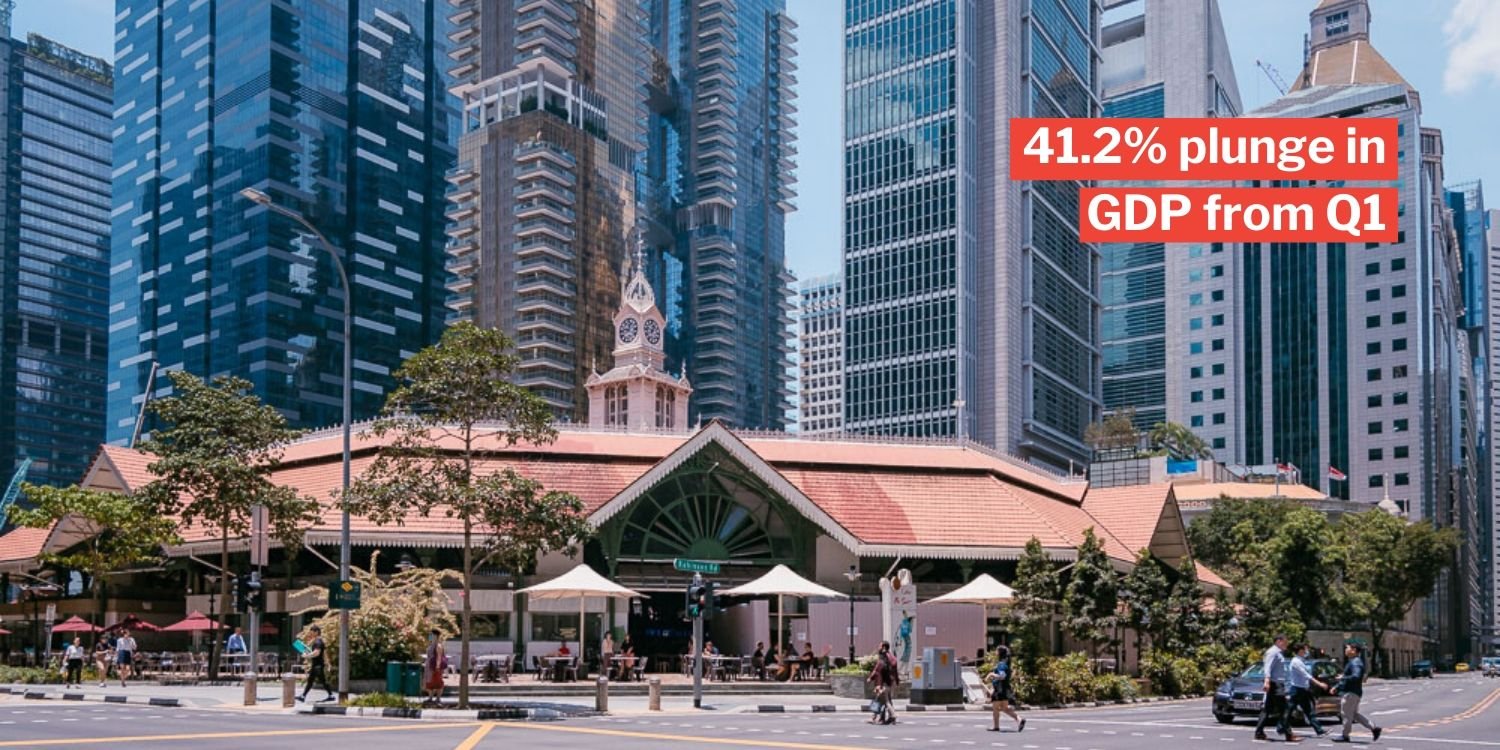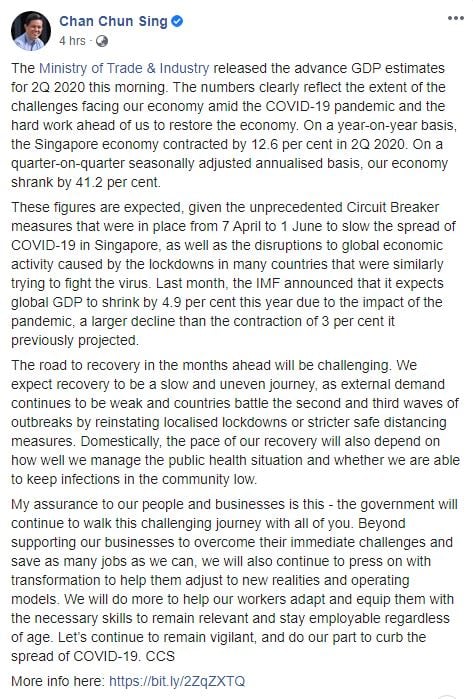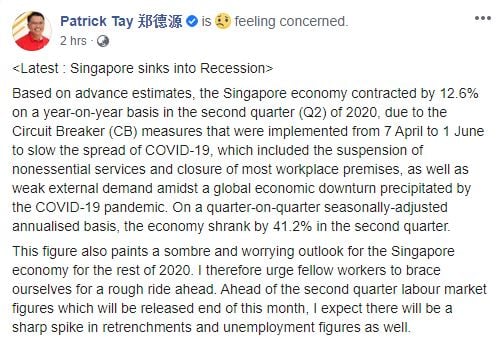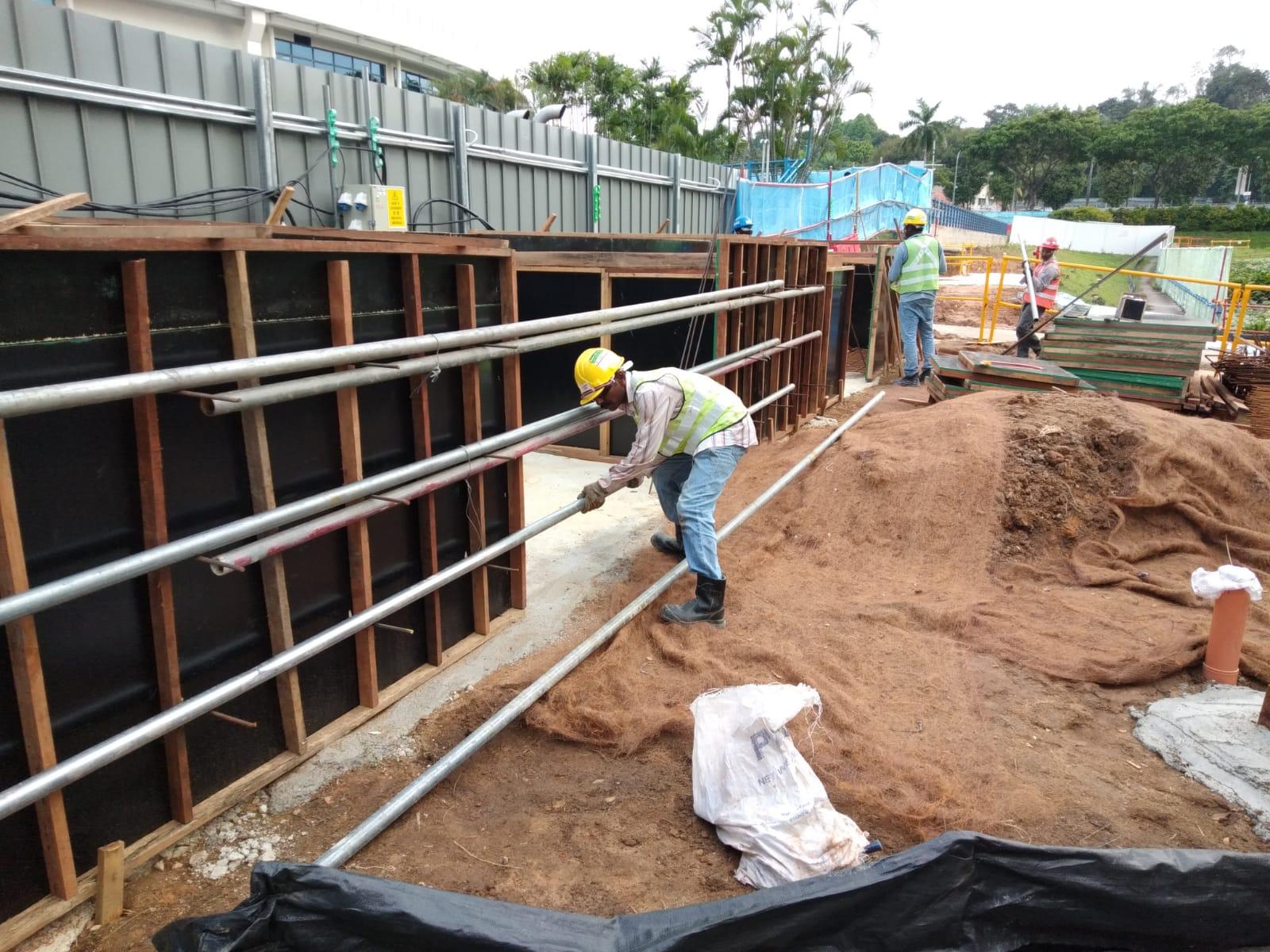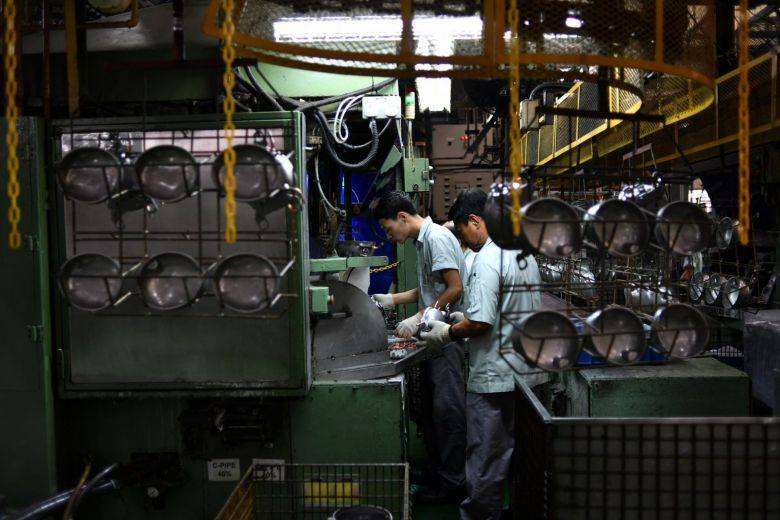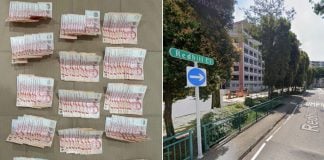S’pore’s ‘Circuit Breaker’ Leads To 12.6% Plunge In 2Q Compared With 2Q 2019, Construction Sector Worst Hit
When Singapore’s ‘Circuit Breaker’ from 7 Apr to 1 Jun took effect, the closure of most business deemed non-essential didn’t just have an impact on our social life and leisure activities, it had a very real effect on our economy.
The extent of which has now been made clear: in the 2nd quarter (2Q) of this year (Apr to Jun), our gross domestic product (GDP) plunged 12.6% compared with the 2nd quarter of last year.
Worse still, the GDP dropped a massive 41.2% from the 1st quarter (1Q). As the 1Q GDP also dropped by 3.3%, Singapore is now in a technical recession.
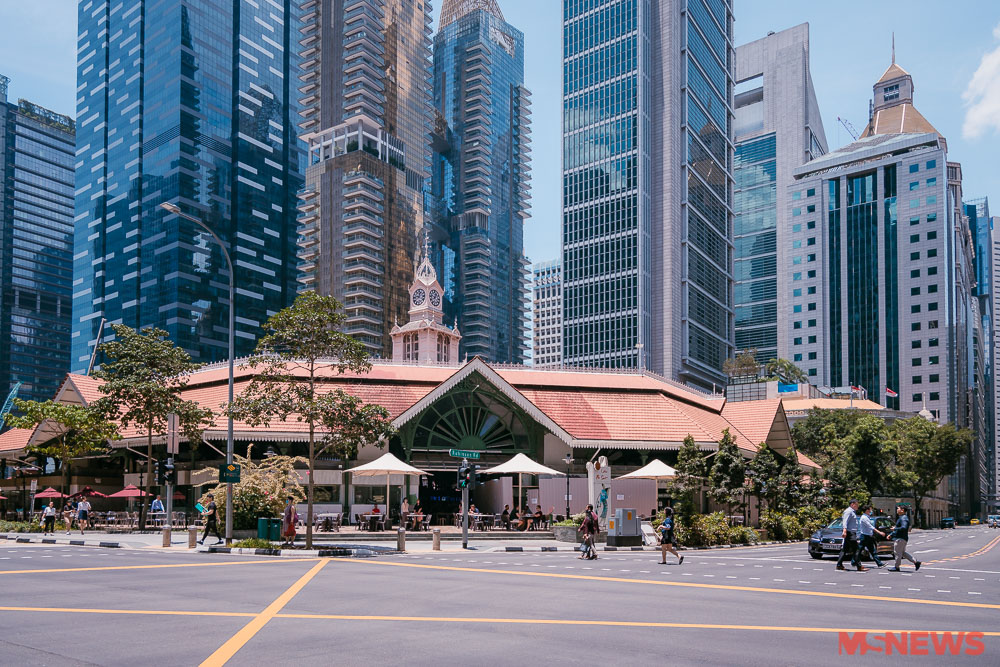
Plunge attributed to ‘Circuit Breaker’
The bad news was revealed in a press release by the Ministry of Trade and Industry (MTI) on Tuesday (14 Jul).
It attributed the decline to the ‘Circuit Breaker’ measures and the global economic downturn due to the Covid-19 pandemic causing weak external demand.
Here are the full figures released by the MTI based on advance estimates:
Since a technical recession is defined by economists as two consecutive drops from quarter to quarter, Singapore has entered a recession as GDP dropped 3.3% in 1Q and again by 41.2% in 2Q.
Worst recession since independence
In May, MTI downgraded the GDP growth forecast for this year to -7% to -4%.
Going by the estimated 2Q results, it seems like these predictions may even be optimistic.
It also means that the recession we’re in now is the worst recession since independence.
Chan Chun Sing says results are expected
Commenting on the results in a Facebook post on Tuesday (14 Jul), Minister for Trade and Industry Chan Chun Sing said they were “expected” given the ‘Circuit Breaker’ measures.
He also said recovery would be “challenging”, and a “slow and uneven journey”, but the Government will provide support to businesses and guidance to help companies and workers adapt.
More reassuringly, Mr Chan also said the Government would walk this journey with Singaporeans.
NTUC assistant chief warns of more retrenchments
NTUC Assistant Secretary-General Patrick Tay struck a more sombre tone in a Facebook post on the same day, saying the results are “worrying”.
He also warned of a “sharp spike in retrenchments and unemployment figures”.
Construction sector is worst hit
From the graph, what stands out is that the construction sector saw the biggest plunge in GDP from the same period last year, dropping a whopping 54.7%.
This is compared with the 1.1% slide in 1Q. If we compare the performance in 1Q with 1Q on a seasonally adjusted annualised basis, it’s a drop of 95.6%.
MTI explained that the plunge was due to the halt of almost all construction during the ‘Circuit Breaker’.
As Covid-19 spread widely through the migrant worker population, most of whom work in the construction industry, migrant worker dormitories had to be isolated to contain the spread. This led to manpower shortages that exacerbated the fall in GDP.
Services-producing industries also see slide
Services-producing industries, which include tourist-dependent sectors like hotels and airlines, outward-oriented services like wholesale trade, and domestic-catering services like food and retail, also saw a drop of 13.6% from 2Q of last year.
This is compared with the 2.4% slide in 1Q. If we compare the performance in 1Q with 1Q on a seasonally adjusted annualised basis, it’s a drop of 37.7%.
MTI attributed the contraction to global travel restrictions, a drop in external demand for trade and the ‘Circuit Breaker’.
Manufacturing sector sees expansion
The only sector that saw an expansion in GDP was the manufacturing sector, which posted a rise of 2.5% from last year’s 2Q.
However, it was a smaller bump from the 8.2% of 1Q. Also, if we compare the performance in 2Q with 1Q on a seasonally adjusted annualised basis, it’s a drop of 23.1%.
The growth recorded in 2Q was largely due to the biomedical manufacturing cluster, MTI said.
However, the chemicals, transport engineering and general manufacturing clusters were still affected by weak external demand and workplace closures during the ‘Circuit Breaker’, it added.
Disheartening GDP figures
While the poor GDP figures weren’t unexpected, they’re still disheartening to hear.
As they are advance estimates, most of the data taken in was from April and May — exactly corresponding to the ‘Circuit Breaker’ period.
Revised estimates for 2Q will be released in August, and will probably take in results from Phase 1 and 2. We’re hoping they’ll be more optimistic.
Featured image from MS News.
